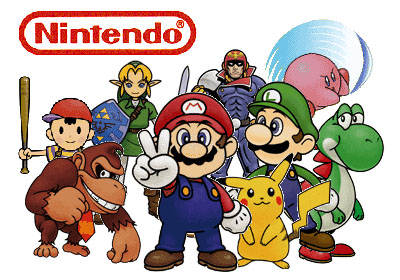I’m a fan of the Japanese style of video games.
Though surely, to some degree, influence by Western culture and its social mores, Japanese developers still have a slew of unique characteristics that Western culture either doesn’t understand or totally rejects. You only need to see what happened to the video game industry after its explosion to see that Western trends now dominate the market; unless you’re a niche company catering to specific tastes, you can’t waste your time on Japanese trends in gaming. Nintendo’s one of the few to have crossed the divide, but that’s partly due to the circumstances surrounding the great video game crash of the early 1980s. Nintendo was the only game in town for a time; if you didn’t like it, you didn’t play. The quality of said titles didn’t hurt either.

Still, it doesn’t seem that some franchises from the days of the NES and SNES evolved sufficiently to the American market. Square-Enix games, in their own way, have become little more than a joke. We lambaste and critique the designs of JRPGs as “too old” or “from a different era”. Action games from Japan get the short shrift unless they appeal to Western design tropes – no Bayonettas here, gentlemen! Give me an emo Dante anyday, good sir! Why have we gone this route?

For one, the gaming demographics have changed. Anyone who grew up along video games played more than their fair share of said games – it isn’t that they don’t remember them. Rather, it’s the inaccurate perception that those games exist for children, not adults. I’m grown up now, and therefore these games aren’t worthy of my time or effort. I don’t think it’s neccessarily a wrong way to think; after all, 1 Corinthians 13 tell us:
11 When I was a child, I used to speak like a child, think like a child, reason like a child; when I became a man, I did away with childish things.
Not that Paul ever played any video games, but the point stands. Still, let’s take this approach and apply it to, say, DMC’s new reboot. If anything, most critics seem to see its “over-the-top” nature as hilariously juvenile and childish, like a child who just discovered a curse word and/or sex (seriously, just go Google the intro to the game; I’ll wait) for the first time and wanted to jam said discovery into every orifice (no, this isn’t an Ephesians 5:4 double entendre. You have a dirty mind!).
But, then again, we also have Jesus affirming the validity of children as persons. This has more to do with the fact that children in antiquity didn’t obtain to the level of “person”. In other words, they could not perform any task as well as an adult, so why protect them? They did not make a good slave, so why buy one? That’s a great deal of effort for a slave owner to raise a child, certainly!
Instead, Jesus says “children deserve a spot in the Kingdom of God as well as any of you!” And why? Because they’re the least of these in status, function, use – whatever pragmatic means a Hellenistic culture would attach. In that sense, our society returns to this facet in a different way. Now, children find treatment as adults, and far too much doting occurs. Young people with, literally, no knowledge or experience in anything have a right to speak out. That, obviously, isn’t what Jesus intended when He rebuked the disciples over this issue. Then again, the world tends to take the surface level version of the commentary and not the full meaning.
That makes it all the more interesting that “kiddie games” still get the shaft from the gamer populace. That they could be rewarding experiences in themselves hasn’t occurred to the vast majority of the gaming population – instead, they continue to harp upon their design critically from a particular cultural viewpoint, one in which the Japanese do not adhere and will not adhere. Certainly, the developers have seen this, and outsource their franchises (Capcom, maybe?). That’s a shame, really.
I love the way Japanese games are designed. There’s a feel and a character to them that doesn’t come from my societal paradigm, and that’s wonderful to experience. I barely played anything from the West at all during my formative years, and this probably accounts for my fascination with game design and mechanics, rather than story, narrative, graphics, or anything else. I prefer bright, colorful, and oversaturated to fifty shade of brown, grey, or black. I like cute and lovable characters over manly macho men.

In fact, the design tropes continue to this day. They’re set in stone, and only recently began to degenerate (at least in my opinion).
1. They are not willing to prevent your failure. The ubiqitous GAME OVER screen may, in fact, rear its ugly head! Gasp! Even the games that we herald as “difficult” (Super Hexagon, VVVVVV, Super Meat Boy) don’t make the failure anything of a task. Levels are far too short and games remain far too forgiving with checkpoints. Real difficulty comes from understanding the game’s mechanics to a degree where you can proceed through a whole level without a single death. It’s a long, sustained endurance match with the game. The previous “indie” games aren’t so much difficulty as they present one difficult situation you can try over and over again. The masocore sub-genre removes the feat of progressing to a point in the level you can’t beat and THEN defeating said task with your knowledge learned from failure. Those games hold your hand more than you think. Super Hexagon has a bit of this, but it still doesn’t sustain itself that well. I still can’t beat a CAVE shooter on one credit, even though I’ve spent hundreds of hours; I can beat Super Hexagon, given enough time and concentration. Most of my failures come from randomness rather than any particular failure on my part.
This stuff’s maddening to me, because I can see they perceive what is difficult in games, yet remove them as outdated contrivances. They were there for a reason, and not just to annoy the living crap out of you. They added new obstacles and difficulties; they added resources management and understanding. They let you learn from your own mistakes, rather than glossing over them with one magnificent run (hence, my dislike of random level designs and randomization – learning such things can be difficult, but also unfair at times) of a particular segment. Surprise, there’s a checkpoint waiting for you, because you deserve it! That tends to be the indie perspective in a nutshell – removing frustrations – that results in subpar gaming design with horrible risk/reward structures.
2. They tend to involve mechanical analysis and in-depth understanding of systems. This might seem a sweeping generalization, but even a dating simulation has its own mechanical hurdles – how do I end up with the girl/boy that I want? You’re actively seeking to manipulate said system in your favor. That’s not wishful fulfillment in itself, but a true understanding of how games work. They are, at base, systems of challenge and reward – in that case, you get what you want at the end. In the case of, say, Super Mario Bros., the challenge comes from the mere satisfaction of traversing a dangerous timed obstacle course. To do that well, however, you must understanding Mario’s momentum, what objects in the environment harm him, which objects help, the patterns of enemies and bosses (just Bowser in the case of the original), and even what gives a high score (if you’re good enough to play for score, anyway).
Each element was carefully crafted. There’s a legend that Shigeru Miyamoto, in designing Super Mario 64, did not start with level design or aesthetics or anything of the sort. Rather, he asked the developers to set up a blank, endless white room with just Mario in it. They want to test the physics, making sure they gave total control and gave the player nearly perfect controls. That was the crux of Mario’s success in the third dimension, and continues to remain as such. If only every game had that level of detail and care to even the physics.

Ever play a Virgin Interactive platformer from the SNES era? You know, those licensed Disney games? The floaty feel of Earthworm Jim (sorry, don’t mean to hurt you none, Shiny, but it doesn’t control well)? The level design that’s hilariously unintuitive, repetitive, and makes no sense at all? The bounty of useless collectibles? Environments that make it difficult to tell the difference between an obstacle and a safe platform? Blind jumps to your death from all the previous confusion? These are the results of copying the form rather than the content. Certainly, you could make the case that these games were designed for the memorization of said levels – but that isn’t how Nintendo games work at all! If they were intending to copy it, they surely failed. At the very least, they trick the consumer into getting a different experience than that for which they paid. Seriously, just look at this footage and tell me how you could know where you’re going or do any of that on your first try.
Also, if you answered in the affirmative, you’re a liar. Not that I don’t have fond memories of the Genesis Aladdin game, but I know its shortcomings almost at a glance. It’s the desire for graphical and aesthetic brilliance rather than a care for superb game design that takes the player’s proclivities into account.
3. And also, they’re fun and if you disagree you are wrong. So there, I said it. If you don’t like it, it’s your fault for being raised on different games or none at all. Your circumstances mean nothing to me you worthless peons!
FIVE HOURS LATER
4. But seriously, Japanese games were designed as games, and not at art. That seems to be at the crux of the whole issue. When you’ve designed something to be meaningful in advance – it fails to have any meaning. Perhaps I can coin a new term – “accidental art” – to refer to this phenomenon. Shakespeare didn’t believe anything he was writing existed for anything but to fulfill commissions – to make money. Surely, many artists of the past and the present have aspirations to create meaningful and extraordinary works, not to generate money, but money can be quite a motivation! Yet, five hundred years later, we look at an entire corpus of brilliant literary works and say “how could one person have written all these magnificent plays?”
Video games, if they ever reach that upper echelon of “artistic works” in society’s eyes, exist in that same paradigm. Video games, in their nascent form, still engender the same rules and qualities of “games” and not anything else. They’re unique in themselves, and games have existed since the dawn of human civilization. Video games merely take this to a different level. I wouldn’t say most single player games are more than a evolved form of solitaire, from that angle. Still, why do we play games, anyway?
Well, you should be playing them for challenge. If not, there’s plenty of other mediums that accomplish your needs better and in a more fully developed form.
